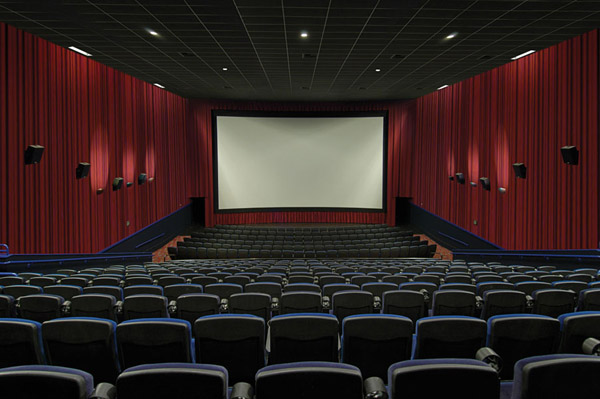Every once in a while, we get a military movie that changes the way Hollywood makes them for years to come. There’s never been a boots-on-the-ground movie about the reality of combat like Warfare, the second collaboration between co-directors Alex Garland and ex-soldier Ray Mendoza. Mendoza was a military supervisor on Garland’s dystopian, shockingly prescient Civil War, and if that film terrified you then hold on to your seats. An immersive, visceral, paranoia-inducing experience told in real-time that thrusts you right into the heat of battle, Warfare doesn’t look, move, or sound like other war movies made in the Hollywood system, and it will for sure be mimicked by others hoping to recapture its intensity.
Unlike other military films, especially the message-heavy batch from the last 20 years or so, Warfare isn’t concerned with larger themes. It’s not explicitly pro-war or anti-war, it’s about brothers in arms trying to survive a mission that has gone sideways in epic fashion. In some ways, it resembles Sam Mendes’ underappreciated Jarhead, capturing the boredom that can be a soldier’s life. The film, about a real-life 2006 mission in Iraq that Mendoza was part of, begins with the men watching an outdated workout cassette and grooving to the cheesy music. It’s a moment of levity that is quickly snatched away and never to be seen again. When violence happens, it’s quick, and there’s no getting beyond its repercussions.
Accompanied by two shaky Iraqi scouts, the American unit moves under cover of darkness into the Ramadi province, where they jack a couple of apartments in the residential area, forcing the occupants to sit in a bedroom, quietly, with no idea what’s happening. The Americans set up a sniper post and begin surveillance. The area is buzzing with activity. The sniper, Elliott (Cosmo Jarvis) stays frozen like a statue, only stopping to jot down notes about movements, times, positions. The boredom begins to set in as the minutes pass, but each man is at a heightened state of readiness. It’s when Elliott finally has to take a pee break that all Hell begins to break loose. The less-experienced man who takes his post, just for a few moments, misses an armed combatant across the street. Within minutes, the civilians on the street are gone, and Jihadists prepared for attack are on the move.
Warfare is filled with rising stars in just about every role, and unlike Ridley Scott’s briefly exhilarating but ultimately empty Black Hawk Down, they don’t all just blend into the scenary like camouflage. Along with Jarvis as Elliott, the film stars D’Pharaoh Woon-A-Tai as Mendoza, Will Poulter as the team leader Erik, plus Kit Connor, Finn Bennett, Taylor John Smith, Michael Gandolfini, Adain Bradley, Noah Centineo, Evan Holtzman, Henry Zaga, Joseph Quinn, and Charles Melton.
Elliott’s part is key but not huge, and most of what unfolds is seen through the alert eyes of Mendoza. For Woon-A-Tai it’s another outstanding performance that reaffirms why he was such a breakout on Reservation Dogs. Poulter, most recently seen in Death Of a Unicorn and The Bear, is convincing as the field commander who gets his brains scrambled, rendering him mostly ineffective. There’s something to be said that he doesn’t do the rah-rah masculine thing and try to play it off as if he’s unhurt. He knows to do so could jeopardize everyone’s lives.
What follows is about 80 minutes of sustained fighting, with the Americans and the insurgents moving around like chess pieces trying to gain the upper hand on the other. The assault is vicious; the Americans are bombarded, leaving some of the unit injured and out of the fight. They are pinned down from just about every angle. Calls for support lead to a daring but disastrous escape attempt, and the grisly aftermath is enough to make your stomach curl.
While Garland handles most of the classic filmic techniques, Mendoza makes sure everything is as authentic to his recollctions as possible. One thing that struck me most was how the soldiers move from position to position, backing one another up, sliding around the confining apartment like pieces of a puzzle sliding into place. Another spectacular aspect is the use of sound. This movie is often incredible loud, booming like the sound of thunder. At other times, it is ghostly, deathly silent and you just know when that silence breaks, it’s chaos. Even expecting it, you aren’t prepared for it. What’s thankfully missing is the feeling that this story is being molded so as to tell a specific kind of audience-approved story, as so many of these films are.
What Warfare lacks in complexity, it makes up in pulse-pounding action. Mendoza is recounting a memory, a lived experience, not trying to send a message wrapped into a tight little bow. That the men don’t concern themselves with things other than staying alive, makes sense for this movie. There are other movies for those looking for a more nuanced approach to Iraq, and some are also great. I love and appreciate The Hurt Locker as much as anyone, as well as Zero Dark Thirty, and even Redacted. But Warfare is a different beast altogether, and taken for what it is, it’s an extraordinarily well done. Perhaps most importantly, Mendoza got to tell the story in the way he wanted to tell it, as a way to honor the men he fought and sacrificed with.
A24 releases Warfare in theaters on April 11th.








